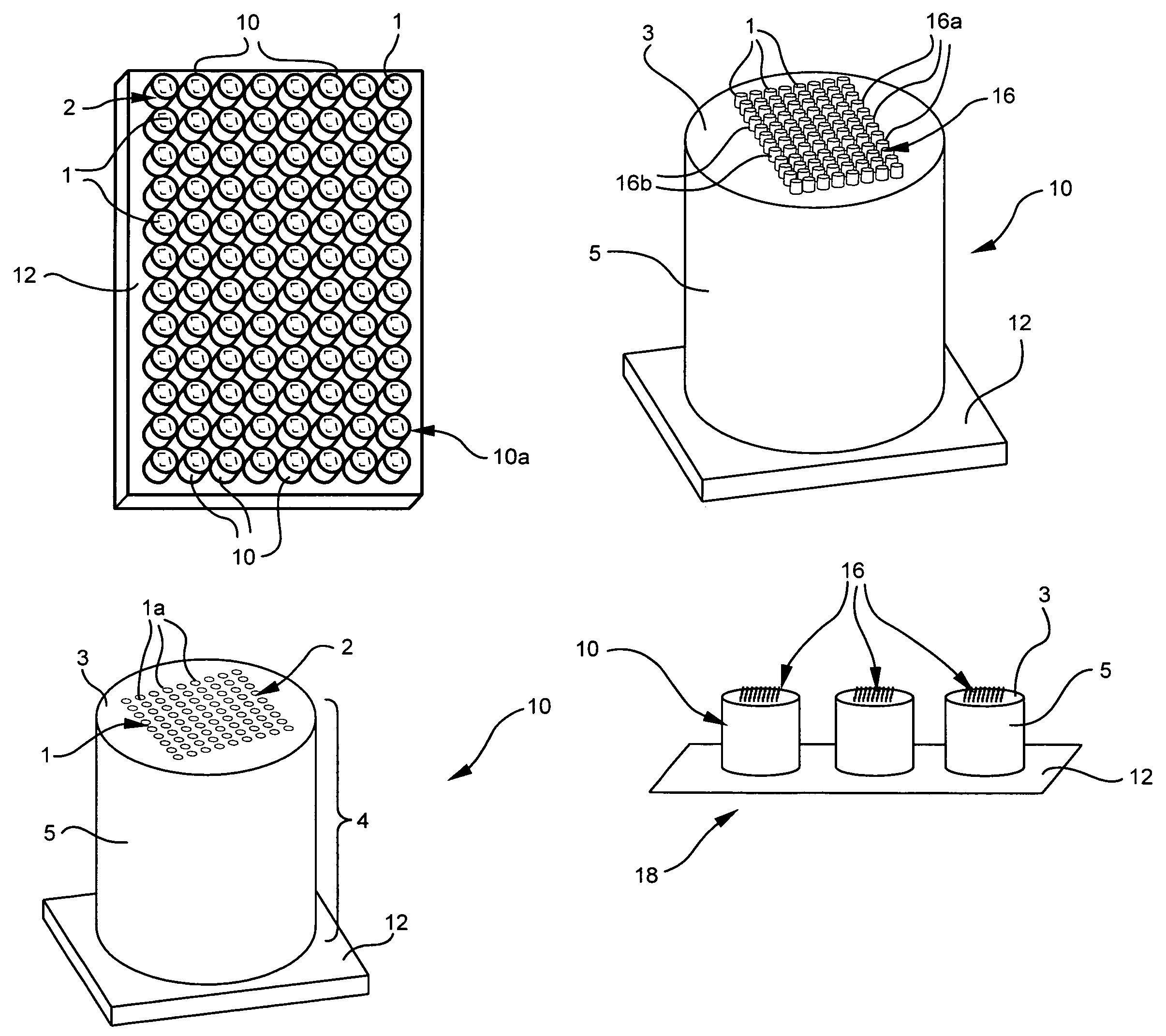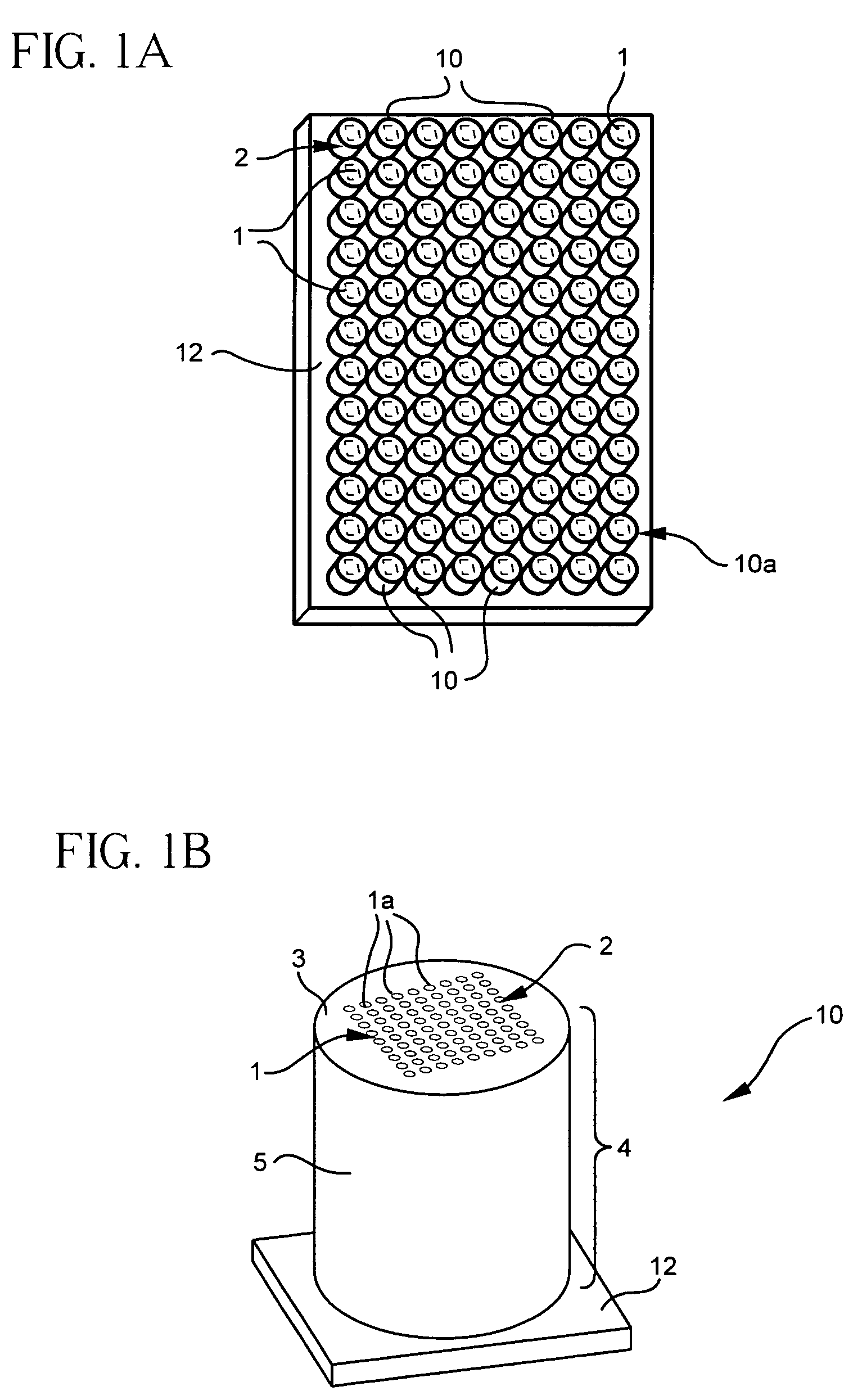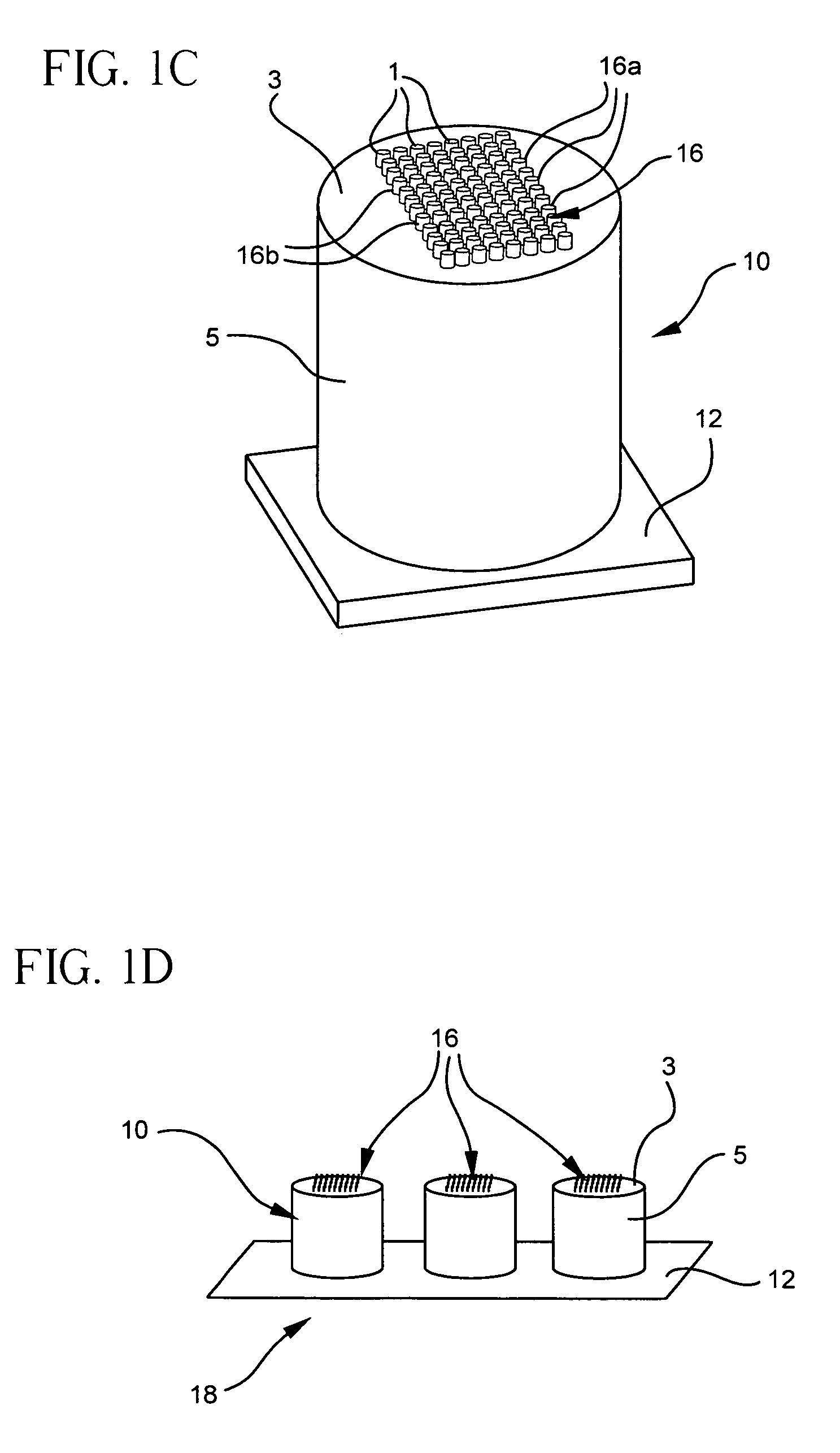Microcolumn-platform based array for high-throughput analysis
- Summary
- Abstract
- Description
- Claims
- Application Information
AI Technical Summary
Benefits of technology
Problems solved by technology
Method used
Image
Examples
example 1
[0102]To validate the concept of a microcolumn-based array platform, DNA microarray hybridization experiments were performed on glass microcolumns. The first surface of each glass microcolumn was polished and treated with a gama-amino propyl-trimethyl-silane (GAPS) coating. To compare glass slide and microcolumn formats, parallel microarray hybridization experiments were done on current GAPS-treated slides. Ten different PCR fragments, as indicated in Table 1, below, representing ten human genes were printed on glass microcolumns and on GAPS-coated slides using a Cartesian pin printer. The Cy3 and Cy5-cDNA probe ratios in hybridization mix was 1×=14 ng.
[0103]
TABLE 1NumberGeneCy5-labeled ProbeCy3-labeled Probe1AATK50x 1x2ABCD50x 1x3ACTB10x 1x4ADH210x 1x5AMPH5x1x6ANXA55x1x7AOC31x1x8API41x1x9BAD0x1x10 BCL2A0x1x
Table 2 summarizes the telative location of each of the PCR fragments on the microcolumn and slide.
[0104]
TABLE 2Genes Printed on ArraysKey to location of numberedGene Samples on ...
example 2
[0110]Use of the present microcolumn device in conjunction with a multiwell plate has at least two significant advantages. The advantages include the ability to minimize assay volumes and to increase assay sensitivity. Both of these features are related to the relatively small volume of the gap formed between the bottom surface of the well and the first surface of the microcolumn. For example, glass microcolumns according to the present invention, when inserted into corresponding silicone chambers (Vivascience, flexiPERM micro 12) having a GAPS-coated glass slide attached as the bottom surface of the chambers, forms a 175 μm gap between the opposing surfaces of the slide and the microcolumn. A small volume of solution is all that is required to fill the gap. A number of cDNA arrays, each with twenty-five gene spots, were printed on the GAPS-coated slides at locations corresponding to the chamber wells. Tables 4 and 5, respectively, summarize the identity and location of each gene on...
example 3
[0116]Further uses for the present microcolumn device include G-protein coupled receptor (GPCR) applications. Arrays of adrenergic β1 receptor (Biosignal Packard) were prepared on membranes and printed onto three adjacent microcolumns—using a robotic pin printer in a fashion like that described in U.S. patent application Ser. No. 09 / 854,786, “Arrays of Biological Membranes and Methods and Use Thereof,” by Lahiri et al., which is incorporated herein by reference. These glass microcolumns were coated with a thin gold layer and functionalized with GAPS. The particular description about the chemical preparation, deposition, and reaction of functionalized gold coatings is detailed also in U.S. patent application Ser. No. 09 / 854,786. Functionalized gold surfaces have been shown to yield signal-to-noise ratios that are far superior to ordinary, uncoated glass surfaces. To assay ligand binding, the microcolumns were inserted into the wells of an 1×8-Stripwell plate (Corning®) containing a f...
PUM
| Property | Measurement | Unit |
|---|---|---|
| Fraction | aaaaa | aaaaa |
| Diameter | aaaaa | aaaaa |
| Length | aaaaa | aaaaa |
Abstract
Description
Claims
Application Information
 Login to View More
Login to View More - R&D
- Intellectual Property
- Life Sciences
- Materials
- Tech Scout
- Unparalleled Data Quality
- Higher Quality Content
- 60% Fewer Hallucinations
Browse by: Latest US Patents, China's latest patents, Technical Efficacy Thesaurus, Application Domain, Technology Topic, Popular Technical Reports.
© 2025 PatSnap. All rights reserved.Legal|Privacy policy|Modern Slavery Act Transparency Statement|Sitemap|About US| Contact US: help@patsnap.com



